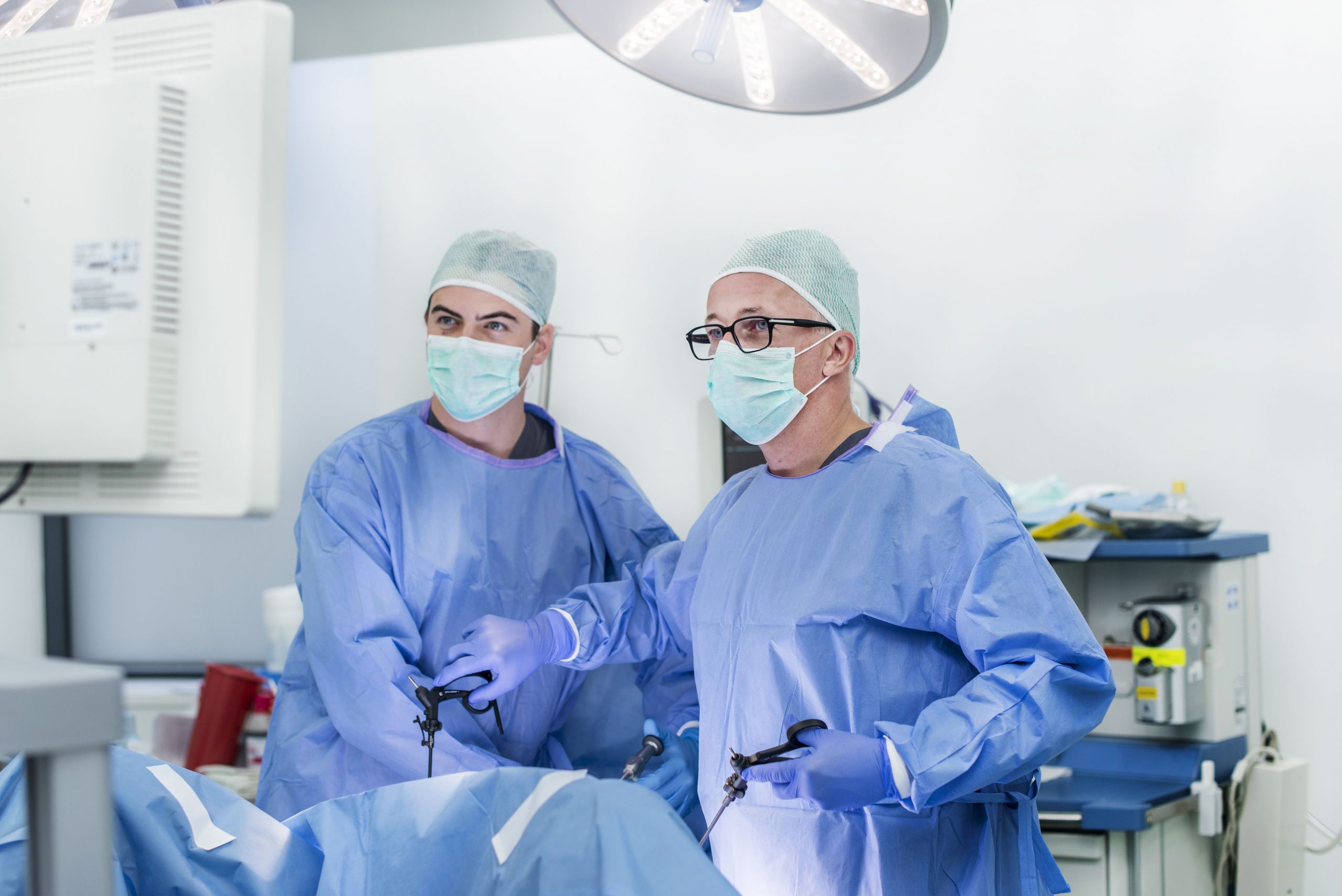Improves semen parameters and restores fertility
Varicocele is an affliction that affects up to 10-15% of men. They are more common in young men, but can manifest themselves at any age. The condition is characterized by dilatation and twisting of the venous vessels of the vascular plexus. Untreated varicocele causes pain and leads to lower semen parameters. They are also one of the most common causes of male infertility.

Are you suffering from varicose veins of the seminal vas deferens?
Find out if laparoscopic treatment is for you
Why do varicose veins of the spermatic cord form?
The cause of the formation of varicocele is the specific anatomical structure of the testicular veins in the male body. Responsible for the drainage of blood from the testicles, the venous vessels are arranged in what is known as a “threadlike plexus. These vessels pass through the inguinal canal and then unite in the abdominal cavity to form the right and left testicular veins. The first of these veins enters the inferior vena cava. The second, on the other hand, enters the renal vein at a right angle. It is at this point that blood flow is disrupted, resulting in the formation of varicocele.
Another cause of varicocele is the failure or complete absence of venous valves. As a result, blood flows in the opposite direction than it should – it retreats from the abdominal cavity, flowing into the left testicle. As a result, the venous vessels begin to successively dilate and twist, resulting in varicose veins of the spermatic cord. Their formation can also be promoted by compression of the left testicular vein by the aorta and superior mesenteric artery.
What are the symptoms of varicocele?
- Varicose veins of the scrotal plexus are primarily manifested by pain, swelling and a feeling of heaviness in the scrotal sac. This is related to blood stasis in the venous plexus.
- Another characteristic symptom is fertility disorders. The process of spermatogenesis, i.e. the formation of new sperm, occurs at a temperature about 1.5 °C lower than body temperature. Varicocele, on the other hand, causes an increase in temperature in the scrotum, resulting in reduced sperm quality and infertility. Varicocele is diagnosed in about 40% of infertile men.
- Advanced varicose veins of the seminal vagina may also be accompanied by so-called atypical varicose veins in the legs. They arise from venous leaks from the scrotal sac to the extremities, known as extremity venous leaks.
What is the diagnosis of varicocele?
Diagnosis and treatment of varicocele are handled by urologists. The basis for diagnosis of the condition is a medical history and physical examination consisting of observation of the testicles and palpation. The diagnosis is supplemented by Doppler ultrasound of the scrotal sac with evaluation of venous flows.
There are 3 stages of seminal varicose veins:
Grade 0 – subclinical seminal varicose veins
Grade 1 – varicose veins are palpable only with abdominal muscle tension
Grade 2 – varicose veins are palpable on palpation but not visible
Grade 3 – varicose veins are clearly visible through the scrotal sac
What is laparoscopic treatment of varicocele?
Several surgical techniques are used to treat varicose veins of the seminal vagina, including classic open, microsurgical and laparoscopic surgery, as well as an endovascular embolization procedure.
AtGyncentrum, we perform surgery for varicose veins of the seminal vagina using the minimally invasive laparoscopic method. The procedure is performed at Gyncentrum Hospital, in an operating room setting, under general anesthesia.
Laparoscopic surgery requires three small incisions through which the doctor introduces a camera and surgical instruments into the peritoneal cavity. The procedure involves ligating the pathological vessels and then cutting the vein that is the source of the varicose veins. After the procedure, sutures and a dressing are placed at the site of the incisions. The procedure takes about 1 hour. The same day the patient can leave the hospital. Recuperation after laparoscopic surgery is quick. Within a few days after the procedure, the patient can return to normal activities.



